STEM
8.1 What is STEM?
STEM is an acronym for Science, Technology, Engineering and Math:
- Science – Observing, making connections, coming to conclusions, and asking questions about how things work. For preschool-age children, science-related learning activities might include exploring water and sand, comparing natural materials like rocks and soil, rolling balls across the room, and looking through a magnifying glass to count how many legs are on the bug that was caught during outdoor play.
- Technology – Using tools, identifying problems, and trying different solutions. Technology-related learning activities for preschool-age children might include identifying simple machines like gears, wheels, and pulleys. It may also include simple coding, where children learn how to program little robots to do simple tasks.
- Engineering – Using tools, identifying problems, designing, and creating solutions, and building and inventing things. Engineering activities can happen in the building blocks play area, where preschool-age children plan and design structures every day with little teacher direction.
- Math – Sequencing, measuring, counting, patterning, exploring shapes, comparing size/weight/volume/height/distance. Math-based learning activities in the preschool classroom include counting, matching shapes, and making patterns. Measuring is easy too, especially with unit blocks where children discover that two of the same-sized blocks equal one of the next size up.
Teaching STEM provides opportunities for children of all ages to develop 21st-century skills such as:
- Problem-Solving: STEM learning experiences require children to use critical thinking skills to identify a problem and create solutions.
- Adaptation: The ability to modify a learned concept to fit a different version of an issue or problem.
- Creativity and applying knowledge: STEM allows children to master real-world skills through experimentation and doing. Being able to immediately apply newly gained skills is a strong motivator for learning.
- Decision-making: All four components of STEM can provide opportunities for children to practice assessing options and making decisions based on those assessments.
- Media and Technology Literacy: It is critically important that children embrace the use of technology at an early age so that they are comfortable with innovative technologies they will be exposed to throughout their lives.
- Teamwork: STEM learning experiences lend themselves to working together in groups to identify problems and come up with solutions.
- Risk-taking and experimentation: Learning by experimentation and doing is inherently risky, as the results are initially unknown. Exposure to managed risk-taking allows children to become comfortable with their ability to take risks.
- Social skills: working in groups promotes social skills such as cooperating, negotiating, listening, following instructions, and turn-taking.
- Communication skills: To be an effective member of a team, children need to be able to communicate their thoughts, ideas, and discoveries to the group.
- Resilience: Learning through experimentation and doing will inevitably expose children to failure. STEM learning experiences teach children that making mistakes is a valuable step in learning.
(Adapted from How to Teach STEM to Preschool Children Through Play)
Unfortunately, it is not uncommon for early childhood educators to feel unprepared to teach science, technology, engineering, and math. They may be afraid of not knowing the right answers to children’s questions or providing the wrong answer. Developmentally appropriate STEM activities during the early years focus on developing STEM skills, not STEM knowledge. When viewed through this lens, educators become co-learners rather than the source of knowledge.
Indigenous Perspective
STEM offers a holistic approach to education similar to that of Indigenous perspectives. Children develop skills that are transferable between activities creating a well-rounded adolescent.
8.2 The Educator’s Roles and Responsibilities
Educators do not need to have answers to all the questions children will raise. Rather than providing children with answers, the educator can use children’s questions as a springboard for further investigations. They may say, “I don’t know. Let’s find out together.” It is essential that educators become learners together with children, model a questioning mind for children and think aloud, expressing interest and enthusiasm. Educators’ thoughtful guidance and support through inquiry experiences build a foundation for children’s understanding of basic science, technology, engineering, and math concepts, foster a positive approach to learning, and develop learning skills and attitudes necessary for success later in life.
The following principles guide educators in establishing a preschool STEM program that fosters children’s curiosity and develops their skills and habits to explore and learn about their world. These principles are consistent with a constructivist approach to learning, where children actively construct knowledge through physical and mental interactions with objects and people in their environment. The principles are drawn from current research-based models and approaches to early childhood education and are consistent with the National Association for the Education of Young Children (NAEYC) guidelines on developmentally appropriate practice.
- The preschool environment supports children’s curiosity and encourages inquiry and experimentation.
- The educator
- acts as a researcher, joining children in exploring their world
- asks open-ended questions to encourage children to think and talk
- introduces children to new vocabulary, including scientific, technology, engineering, and math terms such as observe, explore, predict, and measure
- demonstrates appropriate use of scientific, technology, and engineering tools
- invites children to reason and draw conclusions
- encourages children to share their observations and communicate their thoughts
- models respect for nature
- The content of inquiry is developmentally appropriate and builds on children’s prior experiences
- Scientific inquiry experiences are interesting and engaging for children and educators
- Children explore concepts directly through active, hands-on, minds-on playful experiences
- Children explore concepts in depth through multiple, related learning experiences over time
- Children construct knowledge through social interactions with peers and adults
- Children use language and other forms of communication to express their thoughts, describe observations, and document their work
- Science, technology, engineering, and math are embedded in children’s daily activities and play and provide a natural vehicle for integrating concepts that cross content areas
- Individual differences are recognized, and all children are included and supported
- To provide culturally appropriate and diverse objects, materials and toys.
- The preschool environment, home, and community are connected through science
Indigenous Perspectives
Reciprocal learning is a key component of everyday life. As life long learners, we recognize that we can learn as much from children as they can learn from us. Often, children provide us with reminders of how to stay connected to the natural world and to appreciate life.
8.3 The Learning Environment
The indoor and outdoor environments provide the context for children’s physical and social explorations and construction of STEM concepts. The following are strategies for helping educators set up a physical environment that is rich, stimulating, and conducive to children’s construction of knowledge.
- Be thoughtful about what objects and materials to include in the environment.
- Provide a variety of natural materials to observe and investigate.
- Include objects and materials that allow for creativity and open-ended investigation.
- Include living things in the preschool environment.
- Include scientific tools for observation, measurement, and documentation.
- Make scientific tools available throughout the preschool environment.
- Consider adaptations in scientific tools and materials for children with special needs.
- Use technology to support children’s scientific experiences.
- Present documentation of science-related experiences in the preschool environment.
- Include children’s books with STEM-related content.
- Use the outdoors for natural explorations and investigations.
- Organize the space in ways that promote children’s explorations.
- Allow space for observations and for objects, materials, tools, and resources related to science, technology, engineering, and math.
- Allow flexibility in the use of physical space and furniture to accommodate each activity’s changing needs.
- To promote self-direction and free exploration, tools, and materials need to be accessible and consistently available to children.
- Social interactions are necessary for conceptual growth and the development of communication skills.
- Always be aware of children’s safety.
- Foster children’s curiosity and questioning.
- Guide children in exploring their questions.
- Be an active observer.
- Talk with children and engage them in conversations during their investigations.
- Provide children with time.
- Know when to intervene and when to stand back.
- Model and integrate the use of STEM vocabulary.
Pause to Reflect
Taking children on nature walks keeps them grounded and allows us an opportunity to nurture their connection to the natural world. Expressing positive emotions promotes a natural curiosity and appreciation of our cosmological family. Ask questions, encourage their inquisitive nature and foster their imagination to build a life long relationship with the outdoors.
8.4 Science
Children have a sense of wonder and natural curiosity about objects and events in their environment. Just like scientists, they seek information and actively explore and investigate the world around them, try things out to see what happens, and confirm or adjust their expectations.
Science is a natural and developmentally appropriate focus for young children. Preschool science is about active learning, not memorizing scientific facts or watching the educator perform science demonstrations. The purpose of preschool science is to nurture children’s habits of inquiry, critical thinking, creativity, innovative problem-solving, open-mindedness, and the motivation to learn. Preschool science guides children’s natural curiosity into opportunities to observe, explore, and inquire about basic phenomena and materials in their world.
From infancy, children gain knowledge and develop concepts about living things and physical objects. Preschool science provides children with focused experiences that allow them to learn ways to explore and extend their knowledge. Children begin to adopt scientific ideas and to acquire the basic skills and language of scientific inquiry (ways to explore and develop knowledge and understanding of scientific ideas). Making observations, posing questions, planning investigations, using tools to gather information, making predictions, recording information, and communicating findings and explanations all combine in an evolving process of developing science understanding and creating a disposition to choose to learn science in the future.
Science can be conducted in any preschool setting. All preschools, regardless of the level of resources and access to nature, can use their existing resources to create a program with meaningful science learning experiences. Pushing cars down an incline, building with blocks, manipulating tubes at the water table, or mixing clay with water are everyday play activities that engage children in experimenting with objects and materials. Collecting leaves, searching for insects in the yard, sorting and classifying fruits and vegetables, and sprouting seeds in pots engage children with living things. Experiences of child-initiated play are important as they provide children with opportunities to construct understanding and integrate knowledge. With educators’ intentional planning, guidance, and support, children’s play and interactions with objects can become rich experiences of scientific inquiry and facilitate children’s knowledge and understanding of objects and events in the world.
Preschool educators play a pivotal role in expanding children’s understanding of science concepts and developing children’s attitudes, skills, and the language of scientific inquiry. The educator can focus children’s attention on science concepts, those that are developmentally appropriate, interesting, and engaging for both children and educators. They can create engaging inquiry experiences, encouraging close observations of objects and events.
Children may draw a connection to their own growth and the growth of other animals and begin to develop a broader understanding of living things. Such experiences of scientific inquiry not only support children’s development of scientific knowledge but provide a natural vehicle for developing children’s social skills and mathematics, language, literacy, and other domains.
Preschool educators do not need extensive knowledge about science to teach it well, but they should be willing to research and gain a general knowledge of the concepts and principles they explore with children. The kind and amount of information or knowledge they need to know is readily available through basic research. Acquiring some background knowledge about the topic helps teachers in planning inquiry experiences and challenging and supporting children through their explorations.
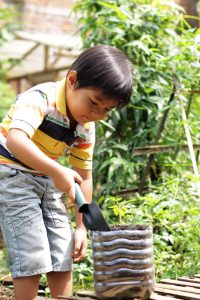
8.5 Technology
Technology-related learning activities can range from investigating how machines like gears, wheels and pulleys work to mastering simple coding. Developmentally appropriate technology activities during the early years are hands-on, with minimal use of screens (e.g., computer, tablet, television, etc.). The National Association for the Education of Young Children (NAEYC) position paper titled “Technology and Interactive Media as Tools in Early Childhood Programs Serving Children from Birth through Age 8” concludes “Technology and interactive media should not replace other beneficial education activities such as creative play, outdoor experiences, and social interactions with peers and adults in early childhood settings. Educators should provide a balance of activities in program for young children, and technology and media should be recognized as tools that are valuable when used intentionally with children to extend and support active, hands-on, creative, and authentic engagement with those around them and with their world.” (pg. 11)
Let’s look more closely at coding. Coding is the process of creating the instructions (or “code”) that tell a computer, digital toy, robot, etc., what to do. According to the NAEYC, young children need strong higher-order thinking (HOT) skills to find coding engaging and fun.
HOT skills include:
- Analyzing
- Predicting
- Planning
- Patterning
- Sequencing
- Sorting
- Organizing
- Remembering
- Rulemaking
- Breaking down tasks
- Evaluating (The T in STEM: Creating Play-Based Experiences that Support Children’s Learning of Coding and Higher Order Thinking)
- Block Play: Provide a variety of blocks (colour, shape, size) for children to create patterns and sequences. Older children can create more complex patterns that must be analyzed to “decode” a secret message.
- Reading: Read developmentally appropriate books that provide opportunities for predicting what might happen next in the story and remembering details.
- Storytelling: Have children work together to write a story that has a beginning, a middle and an end. Have the children create pictures that tell their story and have other children put the pictures in the right sequence.
- Art: Have the children create a system of directional arrows, stop, and go signs (e.g., a pink arrow means “go right” while a green arrow means “go left”).
- Game Design: Have children draw a map on grid paper for a “robot” (one child) to follow using their directional arrows and symbols. The children will need to count each square so they can tell the “robot” how many “steps” (squares on the grid) to take in each direction; in other words, a “code.”
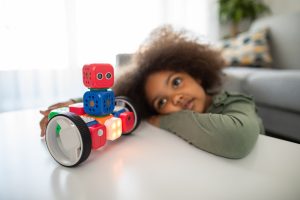
Figure 2: Exploring technology with robots (Photo by Robo Wunderkind on Unsplash)
8.6 Engineering
“While engineering practices—one aspect of STEM learning—are similar to (scientific) inquiry processes, there are some significant differences. Scientific inquiry involves the formulation of a question that can be answered through investigation, while engineering design involves the formulation of a problem that can be solved through design.” (Growing in STEM. The Design Process: Engineering Practices in Preschool)
In the early learning environment, engineering is about how things are built and why. These questions are best explored through play.
Example: Water Conservation
“Three-year-olds Jessie and Michaela spend the morning exploring the effects of last night’s rainfall on the playground sandbox. After the sun dries the sand, they ask their teacher, Ms. Stefanie, for water to make the sand wet again. Ms. Stefanie frames this as a problem, asking them, “How can we transport water from the porch to the sandbox?” Ms. Stefanie helps a small group of interested preschoolers imagine solutions by providing photographs and nonfiction texts of water transportation systems—like pipes, aqueducts, and pulleys—to introduce them to ways others have addressed similar problems.
For several days, the children investigate potential solutions, realizing that the conservation of water should be one of their primary concerns. As they consider why preserving and reclaiming water matter, they sketch plans and discuss the merits and constraints of various models. Eventually, they agree to design a pipe system to move water. Ms. Stefanie provides copies of a blueprint of the playground, which the children use to draw their pipe plans. She asks them to think about the materials they need to create a prototype. The children list pipes, water, sand, buckets, tape, clay, twine, and sticks. Their enthusiasm for the project remains high, and Ms. Stefanie looks forward to guiding the children through a few cycles of the design process so they can improve their prototype and build a pipe system.”
(Growing in STEM. The Design Process: Engineering Practices in Preschool)
Preschool-age children can begin to explore engineering concepts through a simple design process that includes four steps:
- Identifying a problem: Identify a problem or need. Why is it important? How have others approached the problem?
- Imagining and planning: Brainstorm solutions. Sketch possible plans. Choose one to build. List and gather needed materials.
- Creating: Refer to the plan and build a model or prototype. Share the model for feedback or test the prototype.
- Improving: Analyze the model or prototype with others. How could it be improved? Redesign based on feedback.
(Growing in STEM. The Design Process: Engineering Practices in Preschool)
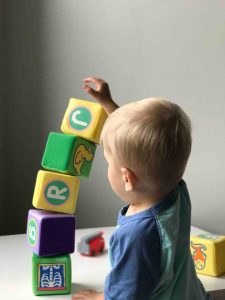
Indigenous Perspective
Two-Eyed Seeing is a framework created by Mic’maw Elder Albert Marshall and explains the importance of looking at life using both western and Indigenous knowledge equally. It provides a holistic, multi-disciplinary approach to understanding. For more information Two Eyed Seeing.
Pause to Reflect
Using the Water Conservation example, answer the following questions.
- What problem did the children identify?
- Why was the problem important to the children?
- What possible solutions did the children brainstorm?
- What information did the children need before they were able to build their preferred solution to the problem?
- What are some questions the educator could ask the children to help them improve their design?
8.7 Math
“Mathematical knowledge begins during infancy and undergoes extensive development over the first 5 years of life. It is just as natural for young children to think mathematically as it is for them to use language, because “humans are born with a fundamental sense of quantity” (Geary, 1994, p. 1), as well as spatial sense, a propensity to search for patterns, and so forth.” (Clements, Sarama, & DiBiase, 2004).
Preschool children are active, and early childhood educators must consider this when providing opportunities to explore mathematical concepts through play. Emotionally, preschoolers are inquisitive and explorative. Cognitively, they are in Piaget’s preoperational stage of development in which they begin to engage in symbolic play and learn to manipulate symbols. However, Piaget noted that children at this stage do not yet understand concrete logic. Children at this stage learn through pretend play. During the first half of the preoperational stage, children are in the “symbolic function substage.” Children at this stage are generally two- to four-years old. They let one object stand in for another and use symbols and signs, such as numbers. They do this through pretend play; therefore, preschool children need as much time as possible for imaginative play. This then leads to the “intuitive thought substage” in which children are not logical but think intuitively. Children at this stage ask many questions and are very curious.
Mathematics is a natural part of the early learning environment. Young children actively construct mathematical knowledge through everyday interactions with their environment, whether inside or outside.
Learning mathematics grows naturally from children’s curiosity and enthusiasm to learn and explore their environment. During the preschool years, children continue to show a spontaneous interest in mathematics and further develop their mathematical knowledge and skills related to number, quantity, size, shape, and space. Educators should encourage children’s natural enthusiasm and interest in mathematics and use it as a vehicle for supporting the development of children’s mathematical concepts and skills.
High-quality mathematics education in preschool is not about elementary arithmetic being pushed down onto younger children. It is broader than mere practice in counting and arithmetic. It is about children experiencing mathematics as they explore ideas of more and less, count objects, make comparisons, create patterns, sort, and measure objects, and explore shapes in space. Mathematics learning happens throughout the day, and it is integrated with learning and developing in other developmental domains such as language and literacy, social-emotional, science, music, and movement. There is a consensus “that high-quality, challenging and accessible mathematics education for three- to six-year-old children is a vital foundation for future mathematics learning.”
Educators have a significant role in facilitating children’s construction of mathematical concepts. When educators join children in becoming keen observers of their environment and in reasoning about numbers, shapes, and patterns, mathematics is enjoyable and exciting for all.
Educators may not always realize the extent to which their current everyday classroom practices support children’s mathematical development. For example, when singing with children “Five Little Ducks Went Out One Day,” incorporating finger play with counting, the educator develops children’s counting skills and understanding of numbers. Discussing with children how many children came to school today and how many are missing supports children’s arithmetic and reasoning with numbers. Playing with children in the sandbox by filling up different cups with sand and discussing which cup is the smallest or the largest or how many cups of sand it would take to fill up a bucket introduces children to concepts of comparison and measurement.
Young children actively construct mathematical knowledge through everyday interactions with their environment. Setting up a high-quality physical environment is essential for children’s mathematical development. The preschool environment sets the stage for children’s physical and social exploration and construction of mathematical concepts. It should provide access to objects and materials that encourage children to experiment and learn about key mathematical concepts through everyday play.
Educators can support the exploration of mathematical concepts with the following:
- Enrich the environment with developmentally appropriate, challenging, and engaging materials that promote mathematical growth
- Integrate math-related materials into all interest areas in the classroom
- Use materials, books, and real-life settings that reflect the culture, ways of life, and languages of the children in the group
- Use children’s books to explore mathematics with children
- Be intentional and mindful in setting up and using the physical environment (children do not effectively use materials and engage in experiences just because you provide them)
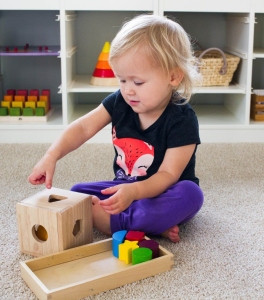
Indigenous Perspective
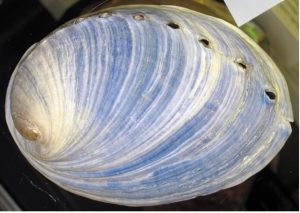
Wampum belts have been used by the Haudenosaunne Confederacy since time immemorial as a mnemonic device to relay information, make agreements between Indigneous nations, and for treaty purposes with non-Indigenous nations. They have been traditionally made using the bark of elm trees and beads that were carved from the quahog shells found on the eastern coast. They are now made with prefabricated beads and animal sinew.
Creating a wampum belt provides a multi-disciplinary approach to maths, sciences and the humanities. Watch the video Wampum Belt lesson plan to learn more.
Pause to Reflect
Many adults (including parents and teachers) shy away from math because they “aren’t good at it.” How do you feel about math? How comfortable are you “teaching” math? Has the way this section presented math affected that at all? If so, how?
Important Things to Remember
- Science, technology, engineering, and math are embedded in children’s daily activities and play and provide a natural vehicle for integrating concepts that cross content areas.
- Developmentally appropriate STEM activities during the early years focus on developing STEM skills, not STEM knowledge. When viewed through this lens, educators become co-learners rather than the source of knowledge.
- Educators’ thoughtful guidance and support through inquiry experiences build a foundation for children’s understanding of basic science, technology, engineering, and math concepts, foster a positive approach to learning, and develop learning skills and attitudes necessary for success later in life.
- Science during the early years is about active learning, not memorizing scientific facts or watching the educator perform science demonstrations. The purpose of science experiences is to nurture children’s habits of inquiry, critical thinking, creativity, innovative problem-solving, open-mindedness, and the motivation to learn.
- Developmentally appropriate technology activities during the early years are hands-on, with minimal use of screens.
- Scientific inquiry involves the formulation of a question that can be answered through investigation, while engineering design involves the formulation of a problem that can be solved through design.
- Learning mathematics grows naturally from children’s curiosity and enthusiasm to learn and explore their environment. During the early years, children continue to show a spontaneous interest in mathematics and further develop their mathematical knowledge and skills related to numbers, quantity, size, shape, and space.
Supplemental Readings
References
Clements, D. H., Sarama, J., & Dibiase, A. (2004). Engaging Young Children in Mathematics: Standards for Early Childhood Mathematics Education. Mahweh, NJ: Erlbaum. DOI: https://doi.org/10.4324/9781410609236
Geary, D. C. (1994). Children’s mathematical development: Research and practical applications. American Psychological Association. https://doi.org/10.1037/10163-000
Growing in STEM. The Design Process: Engineering Practices in Preschool retrieved from https://www.naeyc.org/resources/pubs/yc/sep2018/design-process-engineering-preschool
How to Teach STEM to Preschool Children Through Play retrieved from https://shaws.com.sg/how-to-teach-stem-to-preschool-children-through-play/
NAEYC (National Association for the Education of Young Children). (2022). Developmentally Appropriate Practice in Early Childhood Programs Serving Children from Birth Through Age 8. 4th ed. Washington, DC: NAEYC.
NAEYC (National Association for the Education of Young Children). (2012). Technology and Interactive Media as Tools in Early Childhood Programs Serving Children from Birth through Age 8 retrieved from https://www.naeyc.org/sites/default/files/globally-shared/downloads/PDFs/resources/position-statements/ps_technology.pdf
NAEYC (National Association for the Education of Young Children). (2012). The T in STEM: Creating Play-Based Experiences that Support Children’s Learning of Coding and Higher Order Thinking retrieved from https://www.naeyc.org/resources/blog/creating-play-based-experiences

